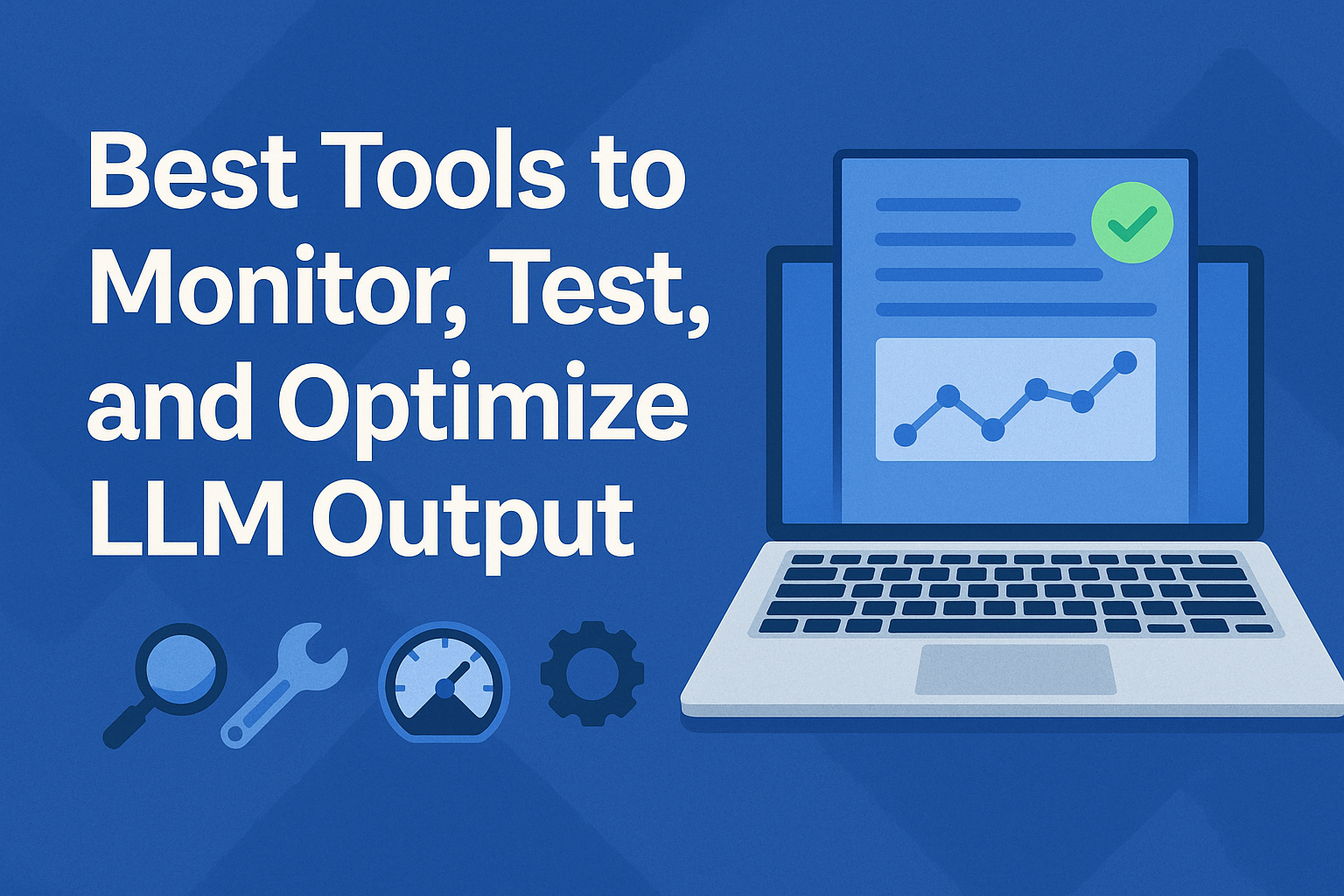Best Tools to Monitor, Test, and Optimize LLM Output

As Large Language Models (LLMs) become integral to various applications, ensuring the quality, accuracy, and reliability of their output is paramount. Fortunately, a growing ecosystem of tools to evaluate and improve LLM output is emerging. This guide explores some of the best platforms and frameworks available to help you monitor, test, and optimize your LLM-powered systems for peak performance.
Why Evaluating LLM Output is Crucial
LLMs, despite their power, can sometimes produce outputs that are irrelevant, inaccurate, biased, or nonsensical (often called "hallucinations"). Without rigorous evaluation and monitoring, these issues can lead to poor user experiences, misinformation, and a lack of trust in AI-driven applications. Utilizing specialized tools helps developers and content creators identify weaknesses, measure performance against benchmarks, and continuously refine their models and prompts.
Key Categories of LLM Evaluation Tools
The landscape of tools for LLM output can be broadly categorized based on their primary function:
- Monitoring & Observability Platforms: These tools track LLM performance in real-time, log interactions, and provide dashboards to visualize metrics like latency, token usage, and error rates.
- Testing & Evaluation Frameworks: These provide methodologies and metrics (e.g., ROUGE, BLEU, F1-score, perplexity) to assess output quality against ground truth or predefined criteria.
- Prompt Engineering & Optimization Tools: These platforms help users design, test, and version control prompts to elicit better responses from LLMs.
- Data Augmentation & Management Tools: For fine-tuning or RAG (Retrieval Augmented Generation) systems, these tools help prepare and manage the datasets used by LLMs.
Top Tools to Evaluate and Improve LLM Output
Here's a look at some prominent tools in the LLM evaluation and optimization space. Note that this field is rapidly evolving, so new tools appear frequently.
| Tool/Platform | Primary Function | Key Features |
|---|---|---|
| LangSmith by LangChain | Monitoring & Observability, Debugging | Tracing, logging, debugging tools for LangChain applications, prompt playground, dataset management. |
| Weights & Biases (W&B) Prompts | Monitoring, Evaluation, Prompt Management | LLMOps platform, prompt versioning, A/B testing, collaboration, model performance tracking. |
| Arize AI | ML Observability & Evaluation | Performance monitoring for LLMs, drift detection, fairness & bias checks, explainability. |
| TruEra | AI Quality & Observability | LLM monitoring, diagnostics, testing, root cause analysis for model failures. |
| Helicone | Observability for LLMs | Monitoring API calls, cost tracking, request/response logging, performance analytics. |
| RAGAS (Retrieval Augmented Generation Assessment) | Evaluation Framework for RAG | Metrics like faithfulness, answer relevancy, context precision for RAG pipelines. Open-source. |
| UpTrain | LLM Evaluation & Finetuning | Open-source tool for evaluating LLMs on various tasks, checks for factual accuracy, safety, and custom metrics. |
Disclaimer: The inclusion of tools in this list is for informational purposes and does not constitute an endorsement.
For a deeper dive into LLM evaluation without human review, explore our guide on how to evaluate LLM outputs without human review.
Choosing the Right LLM Evaluation Tool
Selecting the best tool depends on your specific needs:
- Project Scale & Complexity: Simple projects might benefit from open-source frameworks, while enterprise applications may require robust observability platforms.
- Specific Use Case: Are you building a chatbot, a content generation tool, or a RAG system? Different tools excel in different areas.
- Integration Needs: Consider how well the tool integrates with your existing MLOps stack and LLM providers (e.g., OpenAI, Anthropic, Hugging Face).
- Team Collaboration: If multiple team members are involved, look for tools with strong collaboration and versioning features.
- Budget: Options range from free, open-source tools to paid enterprise solutions.
Frequently Asked Questions
What are common metrics used to evaluate LLM output?
Common metrics include ROUGE (for summarization), BLEU (for translation), F1-score, accuracy, perplexity, and more recently, metrics focused on factual consistency, relevance, and helpfulness, especially for RAG systems. Many platforms also allow for custom metric definition.
Can these tools help with prompt engineering?
Yes, many tools like LangSmith and Weights & Biases offer features for prompt versioning, A/B testing different prompts, and analyzing which prompts lead to better LLM outputs.
How do these tools address LLM hallucinations?
By providing robust logging, tracing, and evaluation metrics (like faithfulness in RAGAS or factual accuracy checks in UpTrain), these tools help identify instances of hallucination. Some platforms also offer root cause analysis to understand why hallucinations occur, enabling developers to refine prompts or grounding data.
Are there open-source tools for LLM evaluation?
Yes, RAGAS and UpTrain are examples of powerful open-source frameworks. The Hugging Face Evaluate library also provides a comprehensive suite of metrics. See the Hugging Face Evaluate documentation for more.
How often should I evaluate my LLM's output?
Continuous evaluation is ideal, especially for production systems. Monitoring tools provide ongoing insights, while more in-depth evaluations should be performed regularly, particularly after significant changes to prompts, models, or underlying data.
Conclusion
The ability to effectively monitor, test, and optimize LLM output is critical for building reliable and high-performing AI applications. The tools to evaluate and improve LLM output discussed here represent a significant step towards achieving that goal. By leveraging these platforms, developers and content strategists can gain deeper insights into their LLM's behavior, identify areas for improvement, and ultimately deliver more value to their users.
Explore our free tools section for more resources on AI and LLM optimization, including our AI citation tool.